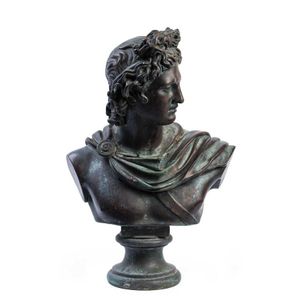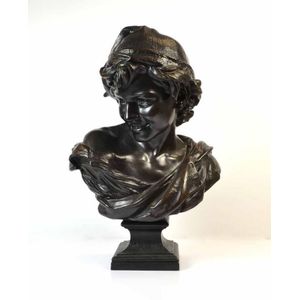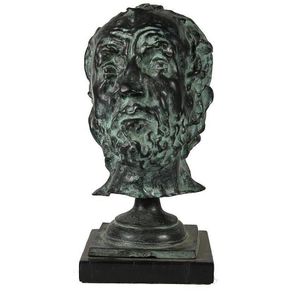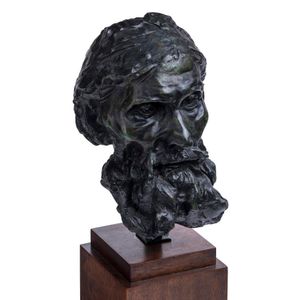Rodin's Eustache De Saint-Pierre Head Bronze Sculpture
You must be a subscriber, and be logged in to view price and dealer details.
Subscribe Now to view actual auction price for this item
When you subscribe, you have the option of setting the currency in which to display prices to $Au, $US, $NZ or Stg.
- Bronze - An alloy of copper and tin, traditionally in the proportions of about 9 parts of copper to 1 part of tin.
The discovery of bronze in Western Asia in the 4th century enabled people to create metal objects which were superior to those previoulsy possible because of its strength and hardness, and it has been used throughout the world for weapons, coins, tools, statuary and other decorative items.
It is very fluid in a molten state, and its hardness, strength when set, and non-corrosive properties makes it most suitable for casting sculpture.
This item has been included into following indexes:
Visually similar items

A bronzed bust of Apollo, after the antique, 19th century, 56 cm high

Bronze, after Jean-Baptiste Carpeaux (1827-1875), 'The Laughing Neapolitan Boy' c.1900, with dark patination, signed 'Jb Carpeaux' in cast, stamped 'Bronze' in base. Height 49 cm

A Paris 1900 Exposition Universelle/Olympic Games juror's badge by Christofle of Paris, signed by the designer L. Bottee, inscribed Jury.

Bronze patinated bust of Bearded man set upon a marble base, after Rodin. Height including base 32 cm
